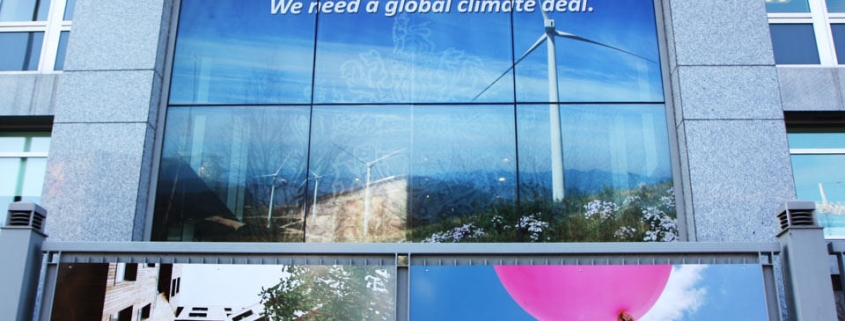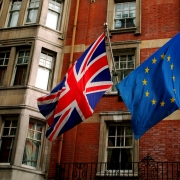Two post-Brexit scenarios for the UK’s low carbon economy
Over the recent talks and negotiations on the UK’s future outside the EU, British lawmakers will need to decide within the next 18 months¹ which EU regulations will stay in the domestic legislation including energy efficiency policies.
Based on the latest developments, European and British experts have raised their concerns about Brexit’s impact on the UK’s low carbon future.
The main concerns focus on three key areas; first of all, a potential deficit in energy supplies could destabilise the domestic energy security leading to a new energy crisis. Until now, electricity imports from Europe have sustained the decarbonisation of the UK electricity sector. Second, the absence of long-term objectives will raise the levels of uncertainty in the energy market – for example, by driving the energy prices up – a detrimental factor for attracting low-carbon investments. Third, a practical issue that occurs after the 2016 UK referendum; the disruption of Ireland’s energy market.
By now, the internal EU single market kept united North Ireland with the Republic of Ireland. By separating the two markets, there are fears of serious implications and disruptions in Ireland’s energy supplies – given that the two parties already rely on Great Britain’s gas.
Beyond doubt, the United Kingdom has been among the pioneers of setting ambitious climate change targets, encouraging the deployment of green technologies. The transition to a low carbon economy has been sought as a sustainable way to mitigate climate change and stimulate future economic development. According to the latest energy trends and prices released by the National Statistics, more renewable resources entered in the energy mix, totalling 23.4% of the electricity generation, while energy consumption dropped by 5.8%.
Nonetheless, the alignment of the UK’s energy policy with European regulations has proved beneficial for its climate change policies. Indeed, the access in the Internal Energy Market boosted the British competitiveness by dropping its energy prices and securing its energy supplies. The EU membership also offered access to a number of international agreements and European energy programmes – including the EU Emissions Trading System (ETS)² and Euratom³. What’s more, the integration of EU regulation in the domestic market has created a secure environment for investors. Adding to that, the European funding and sponsorship have been the main resource of financing for the UK’s energy infrastructure reaching nearly £2.5 billion according to the Chatham House report. What’s important to mention here is that funding and investing are two of the most significant factors for a transitional economy and the deployment of new green technologies that will need to replace the existing infrastructure while responding to the energy demand.
Depending on the UK’s decision to hold ties with the Union, there are two possible scenarios for its low carbon policy. The first scenario, if no agreement will be reached, the divergence between the EU-UK energy efficiency standards will lead to lowering the efficiency standards of buildings and products in the UK. In the long run, it will harm the competitiveness of British exporting products and will set a huge burden in the future trading relationship with the EU. Other occurring trading restrictions and additional costs or customs will prevent European investors to continue contributing to the UK’s transitional low-carbon economy. Interestingly enough, the majority of the UK’s foreign direct investments, almost two fifths, derive from Europe (Office for National Statistics, 2017). Finally, the domestic energy supply will be in jeopardy given the UK’s reliance on imported energy⁴. Energy interconnections and trade between the EU members have securely supplied the British domestic market with gas and electricity from Europe through natural gas pipelines interconnections; gas and oil imports from Norway; electricity imports from Netherlands and France (Office for National Statistics, 2016).
According to the second scenario, if the country decides to comply with the EU regulations, both parties should continue working together on the reduction of the carbon emissions; Britain has already achieved some of the demanding targets set by the EU, such as the EU ETS scheme. A Parliament document suggests that the government seeks the continuation of the UK’s membership of the Internal Energy Market. Besides, other non-member states already participate in the EU energy programmes such as Iceland, Norway and Liechtenstein. This solution would serve well both parties on their energy supply and geopolitical security; it would allow the UK to maintain an active presence in the EU energy forums; it would allow Ireland’s energy market to remain united.
All in all, it is obvious that the UK energy policy is dedicated to a low carbon future and will continue to play a globally influential role in this direction. Finding common ground with the EU partners seems to be the most rational solution that will help both parties with their low-carbon policies. In addition, the British government will need to elaborate its long-term objectives with transparency and clarity in order to continue attracting new foreign investors for its climate change agenda. Finally, searching for alternative resources to replace EU funding⁵ is another important issue that the government should reconsider for the sake of its innovation and competitiveness in the energy sector.
Photo: British High Commission Ottawa, #Climate Action on Display (2016). Source: (flickr.com) | (CC BY-NC-ND 2.0)
Footnotes
[1] Within the next 18 months:
The official exit of the United Kingdom from the European Union is scheduled for no later than 29th March 2019.
[2] EU Emissions Trading System (ETS):
The first global emissions trading system that aims to reduce the carbon emissions within 31 countries by setting a cap on greenhouse gases. With the trading scheme being in its third phase, European companies buy a carbon emissions allowance, but the ultimate goal of this scheme is to reduce the total emissions in the long run. In the UK, the EU ETS has played a critical role in the delivery of carbon budgets; in order to support the cap and trade system, the British government introduced in 2013 the Carbon Price Floor.
[3] Euratom:
The European Atomic Energy Community or otherwise known as Euratom is a European entity established in the 1950s with an emphasis on nuclear safety and security. To date, its contribution is vital for achieving a safe but energy-efficient future; by assisting the EU members to decarbonise their energy system while maintaining the highest level of radiation protection. Triggering Article 50 will urge the UK to leave Euratom due to its legal ties with the EU treaties. As such, there is a big risk for the UK’s nuclear programme might face disruptions in supplies and funding as new arrangements will be necessary for future nuclear cooperation agreements, a procedure that will require time
Due to its legal ties with the EU treaties, Article 50 will urge the UK to leave Euratom. As such, the UK’s nuclear programme might face disruptions in its supplies and funding. For this matter, new arrangements on nuclear cooperation will need to take place for future agreements; a procedure that will require of course depth of time.
[4] UK’s reliance on imported energy:
According to Total Energy Statistics, the UK’s net imports reached 37.4 % for the first quarter of 2017 (Department of Business, Energy And Industrial Strategy, 2017).
[5] EU funding:
The United Kingdom has been the recipient of major funding from the European Union. For Horizon 2020, one of the biggest EU funding programmes on research and innovation, the UK has received around 15% of the funding available. For the energy sector solely, the European Commission granted €32 million to British organisations participated in Euratom projects.
Bibliography
European Commission, Euratom, Available at: https://ec.europa.eu/programmes/horizon2020/en/h2020-section/euratom (Accessed 1st September 2017)
European Commission (2017) Horizon 2020, Representation in the United Kingdom, Available at: https://ec.europa.eu/unitedkingdom/tags/horizon-2020_en (Accessed 3rd September 2017)
European Commission (2017) The EU Emissions Trading System (EU ETS), Available at: https://ec.europa.eu/clima/policies/ets_en (Accessed 1st September 2017)
Froggatt A., Wright G. and Lockwood M. (2017) Staying Connected Key Elements for UK-EU 27 Energy Cooperation After Brexit, Chatham House, Available at: https://www.chathamhouse.org/sites/files/chathamhouse/publications/2017-05-05-UKEUEnergyEMBARGO.pdf (Accessed 3rd September 2017)
House of Commons (2017) Euratom, Briefing Paper CBP 8036, Available at: http://researchbriefings.files.parliament.uk/documents/CBP-8036/CBP-8036.pdf (Accessed 31st September 2017)
House of Commons (2017) Leaving the EU: negotiation priorities for energy and climate change policy, Fourth Report of Session 2016-17, HC909, Available at: https://publications.parliament.uk/pa/cm201617/cmselect/cmbeis/909/909.pdf (Accessed 30th August 2017)
Morgan S. (2017) Scrapping EU efficiency rules would hike UK energy bills post-Brexit, Euractiv.com, 25th August, Available at: http://www.euractiv.com/section/energy/news/scrapping-eu-efficiency-rules-would-hike-uk-energy-bills-post-brexit/ (Accessed 31st August 2017)
National Statistics (2o17) Energy Trends: total energy, 31st August, Available at: https://www.gov.uk/government/uploads/system/uploads/attachment_data/file/622709/Total_Energy.pdf (Accessed 1st September 2017)
Office for National Statistics (2016) UK energy: how much, what type and where from?, 15th August, Available at: http://visual.ons.gov.uk/uk-energy-how-much-what-type-and-where-from/ (Accessed 1st September 2017)
Office for National Statistics (2017) UK foreign direct investment: trends and analysis: summer 2017, 10th July, Available at: https://www.ons.gov.uk/economy/nationalaccounts/balanceofpayments/articles/ukforeigndirectinvestmenttrendsandanalysis/summer2017/pdf (Accessed 2nd September 2017)






Leave a Reply
Want to join the discussion?Feel free to contribute!